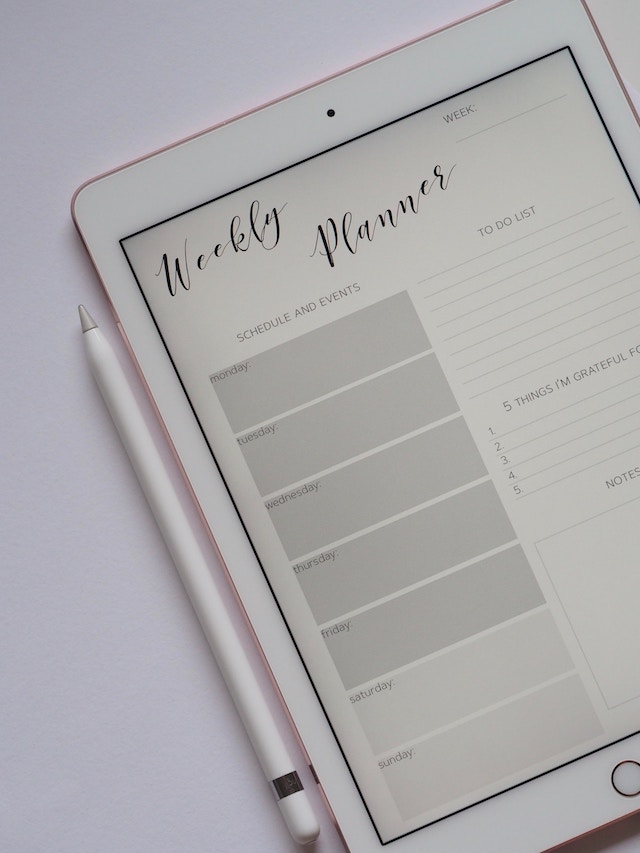
You sit down to write. But suddenly, you have no idea where to start. Maybe you have hundreds of ideas floating around in your head and you can’t seem to pick one. Maybe the ideas all disappeared at the sight of a blank page. Or maybe you’re still struggling to figure out why exactly something you’ve written feels weak.
Simply put: You’re stuck.
But don’t worry. The Creative Agile system is here to get you out of the mud. And it will only take a week.
What’s Creative Agile?
Originally, agile methods stemmed from the need for improved software production processes. Most agile systems function on a series of one- to two-week "sprints" focused on solving a single problem. Through rapid iterations and testing, agile develops successful software faster.
Eventually, these methods made their way into the wider business world, specifically through Jake Knapp’s Design Sprints. In a design sprint, you block off a five-day span for idea exploration by a small team with each day dedicated to a separate part of the prototyping process. Designs are then tested and iterated on to improve them.
Now, we can apply the same iterative mindset to creative problems, like our writing woes, through Creative Agile.
Why Use Creative Agile?
The problem with writing is that we can too often get bogged down in the details of writing or mental traps that we end up staring at a blank page. Or there are so many possibilities running around in our heads that we can’t bring ourselves to just work on one. Plus, there’s the ever-present worry that what we produce won’t be something that people want to read.
After all, the typical writing process looks like this:
- Write a rough draft of an entire piece
- Edit without being sure whether your edits are
- (Optional) Give the piece to critique partners and receive feedback
- Incorporate new feedback in editing
- (Strongly recommended, but optional) Give the piece to beta readers
- Incorporate new feedback in editing
- Give new draft to another group of beta readers
- Repeat steps 5–7 until satisfied with the editing process
- Final line edits
- Start publishing process or begin querying
Now, for a 1,500 word article, this process might take anywhere from a few hours to a few days. That’s a reasonable time frame.
However, for a 150,000 word novel, the process becomes very tricky and time-consuming And by the end, you’re not sure whether your book is as strong as it could be.
The Creative Agile process solves these issues in a couple of ways:
First, it builds in thinking and research time. Brainstorming is part of the writing process you have to get straight before you even get to the writing. And, because it’s a timed system (just like design sprints, every day has a schedule), you can’t get caught up in researching or thinking when you should be writing.
Second, Creative Agile takes advantage of rapid feedback. For any form of learning, feedback is necessary to improve. The sooner that feedback is available, the better. Which is why The Creative Agile process focuses on getting your work out to a select group of readers early.
Thus, the Creative Agile process looks like this:
- Determine your problem point
- Define a single manageable goal for your week-long session
- Brainstorm and research
- Write the rough draft
- Put the rough draft away
- Edit the rough draft
- Present the piece to select "alpha readers"
- Implement reader edits
- Set edited piece aside for later draft iterations
Now, keep in mind that the Creative Agile system is more of a troubleshooting method. You likely won’t be breaking down every part of your novel in this way (though it can be done), but rather working on the parts of a project that are giving you the most trouble.
So, what do we need to get started?

Getting Started with Creative Agile
You’ll need a few things for the Creative Agile process:
First, a calendar. You need to plan out your week. Because this is a week-long process, you need to have time blocked off to work on it every day of that week. While a solid seven-day stretch would be optimal, most of the work takes place on days one through five (with the other days dedicated to alpha readers and implementing reader edits), so a five day time-frame will also work. You’ll simply need to schedule a day for alpha reader feedback. Plan out your week and block an appropriate amount of time for each step of the process.
Second, you’ll need your writing, brainstorming, and research materials. This may include pen and paper, a computer and/or research-related books and documents. You don’t have to tie yourself to one format for this process either. Some people prefer to brainstorm on paper then write on a computer. Others prefer the opposite. Use the format that works best for you.
Third, you need a consistent place to brainstorm, research, and write. This can be the same place. However, some writers swear up and down that you need a separate space dedicated to writing versus other writing-related activities that don’t involve actively putting words on the page.
Finally, you’ll need a select group of alpha readers to read your work. The ideal alpha reader is someone you’ve already worked with as a critique partner or a beta reader and knows your style. You’ll also want to ensure you choose someone who can temper the nature of their critiques to a rougher draft. While the process can be done with one alpha reader, having two or three perspectives is an even bigger help. But, limit your group of alpha readers to five. More than that may be too much feedback and overwhelm you with an early draft.
Once you’ve collected all the above materials, it’s time to dive into the Creative Agile process.

7 Steps in 7 Days
Day One: Define Your Problem and Goal
Figuring out what you need to work on may be the most difficult part of the Creative Agile workflow. Sure, it doesn’t sound like it would be all that difficult. But, the problem lies in the time restriction of the process. You can only work on what you can get done within a week’s time. Sometimes, you have a smaller problem, like single scene that’s giving you trouble. Other times, you’re struggling with a much larger problem, like fixing your protagonist’s characterization. That large problem will be nothing but trouble if you try to tackle it all at once. So, it has to be broken down into smaller chunks.
Start by determining the scale of your trouble spot. If you have a more concrete issue like “Write/rewrite article introduction” or “Write Scene A,” you’ve already pinpointed an issue primed for a Creative Agile sprint. But if you come up with a more abstract problem, like digging into character motivation or reorganizing information or plot events, you need to break it down.
With the more abstract issues, ask yourself: Where does this issue start? This may take some time to tease out. Don’t rush it—that’s why the entire day is dedicated to pinpointing a problem and goal. Once you’ve found the starting point, you have a place to go for your goal.
Now, if you’re struggling to determine any potential root issue, play the why game. Ask yourself why something’s the case until you’ve drilled down to a manageable scale. For a large project like a novel, this might play out this way:
I don’t like the last half of the third act. Why?
Because it feels weak. Why?
Because I’ve used a deus ex machina device. Why?
Because the hero has no other way to defeat the villain. Why?
Because the villain has too much power.
A-ha. There you go. Your villain is overpowered or your hero doesn’t have enough power. You’ve found your problem.
Once you’ve figured out your problem point, choose a reasonably sized chunk of writing to pursue for your sprint. You don’t want to tackle more than you can write in a dedicated writing day. Choose your goal accordingly. When in doubt, err on the side of caution – less is more.
Your last task: write your goal down. You’ll want to have it in front of you during your brainstorming and writing days, so make it hard to miss.

Day Two: Brainstorming and Research
This is the day that writers either adore or hate. Because today is dedicated to nothing but…
Thinking.
Yep, you heard it: there’s only thinking allowed for this brainstorming and research day. The only writing allowed today is notes. You cannot work on your project.
See why it’s a love or hate relationship?
So, depending on the topic you’re tackling, you may be brainstorming, you may be researching, or you may be doing both. If you have a problem that requires both, chunk the processes: an hour on brainstorming vs an hour on researching. Don’t keep flipping back and forth between the two.
For brainstorming, place your goal or problem point in front of you. Now, using your favorite brainstorming technique, start developing as many solutions to the problem as you can.
Think of this brainstorming in rounds: start with working as many ideas as possible, then narrow down the ideas that will make the most sense. Eliminate ideas until you’re down to one or two, then choose the one you’re the most interested in. Always remember: never throw away the old ideas. If you find that the one you choose isn’t working, you’ll want to have the other options around to test.
For researching, consider all the things you might need to know in order to write your selected chunk. Do you need to have documentation or references? What details do you need to get right in a certain scene? Try to think of this in as much detail as possible. The last thing you want is to interrupt tomorrow’s writing session with multiple Google searches.
Once you’re satisfied with your brainstorming and research process, put any notes you collected in your writing area. You may need to refer back to them during the writing process.
Day Three: Writing
This is the most self-explanatory part of the Agile process. You need to write the scene or section you’ve chosen to work on. But, consider the following points while you're writing:
If you’re writing a first draft, don’t worry about making it 100% cohesive. If you have a gap, put a note in brackets and start it with a TK. This is an old journalistic trick for items you need to reference later. This might take the form of [TKCharacterName] for a character you haven’t named yet or [TK Hero Escapes] for a short paragraph you need to revisit.
If you’re editing or rewriting an existing draft, take some time to familiarize yourself with the scenes or sections on either side of your target. But, only read them once or twice. You don’t need to get bogged down in editing another section. Only the one that is your target. Again, for any points you don’t have on hand and need to refer back to later, use the [TK system].
The point of this day is to get the raw materials onto the page. You’ll have plenty of time to refine them on your editing day.

Day Four: Break
Yes, you read the above correctly. You need to set your project aside for 24 hours. Give it time so you can come back to it with fresh eyes. You’re welcome to work on other projects or pieces during this time, but do not work on your sprint section.
Day Five: Edits
Like writing, this day is a fairly self-explanatory process. Pull out your piece and start refining it. Worry just about this section, not about any logical or plot changes that might come into play in a larger whole. Fill in any gaps from the earlier draft, polish up any necessary references or research, and edit until you have a draft you’re satisfied with presenting to alpha readers.
This is a great time to pull in a tool like ProWritingAid. It'll help you buff out any grammatical errors or style mishaps that you might not notice otherwise. Because it's highlighting your errors for you it can really help to cut down your editing time.
Day Six: Present the Draft to Alpha Readers
Now comes the time to give your section to your readers. This probably feels pretty scary, especially if you’re not used to getting critiques on rougher drafts. Here are a few tips to make it run more smoothly:
Do the critiques in person or over a video call if possible. Occasionally, written comments may come off a bit harsher than intended. For a work that’s in a rough draft stage, this kind of confusion isn’t helpful. You need to be crystal clear on the intent of a comment. If you’re in front of your alpha reader during their critique, you can always clarify what they meant.
Remind your alpha reader this is a rough draft before you get started. You definitely don’t need line edits and you don’t need the material picked apart with a fine-toothed comb. But, you’re testing the ideas to see if you’re on the right track. The reminder will hopefully direct your alpha reader towards giving more overarching feedback on the draft rather than dissecting each line.
Don’t be afraid to bat a few thoughts back and forth. If your reader makes a comment on a spot you’ve been having trouble with, run some potential fixes by them. Giving your alpha readers a chance to act as sounding boards can narrow down your options when working on edits.
Finally, remember nothing is set in stone because it’s an early draft. Early drafts can always be improved. If your alpha readers give you a great deal of feedback on things they would change, you can make the changes. You also don’t have to take every single comment and make alterations. Use the feedback that’s useful to you.
Day Seven: Incorporate Reader Feedback
By now, you’ll have between one and five sets of reader feedback. It’s time to incorporate the feedback into your draft.
Start by reading through the comments within each draft. See if there are any themes to the comments. Are a majority of your readers making the same point? Typically, you’ll find themes or clusters to the commentary across multiple readers. These points are the most likely targets for changes in your next draft.
From here, it’s just a matter of incorporating the points you agree with. But, save back all the feedback provided. Sometimes comments that don’t resonate in the initial drafting stages will become more relevant later on. You can always review the feedback at a later date.
After tweaking the piece based on the reader feedback, you’re ready to set your sprint draft aside and move onto the next section.
Make Creative Agile Work for You
Now you’re armed with the tools you need to untangle any logic snarls or patch the most difficult of plot holes. No matter the size of the writing issue you’re facing, you can always transform it with this manageable process.
So the next time you’re stuck on your writing, remember: all you need to do is sprint.


